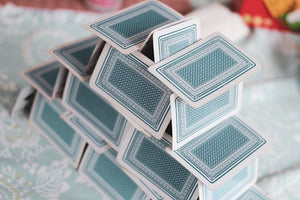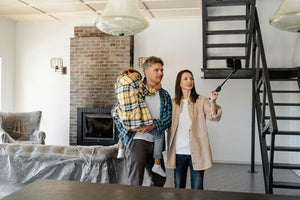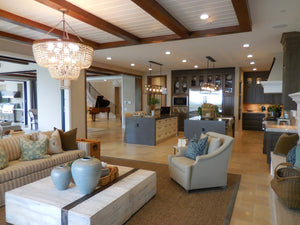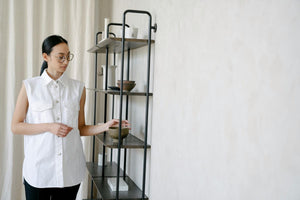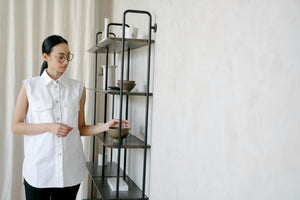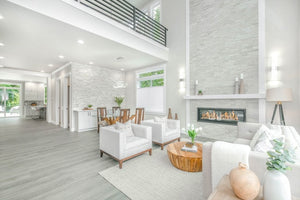The Art of Making a Home Look Lived-In When You’ve Already Left

The Art of Making a Home Look Lived-In When You’ve Already Left - Empty homes rarely tell a story. They leave too much to the imagination and fail to spark emotional reactions. Buyers need to picture real life unfolding in the space. Making a home look lived-in gives the property warmth and purpose. It builds a silent connection. If you’ve already moved, don’t settle for cold and lifeless. Stage your home with intention. Create an environment that invites buyers to move in mentally.
Leave Behind Personal Touches That Spark Emotion
When a house feels too empty, it turns buyers off. They may assume the space is neglected or feel awkward walking through a shell. Don’t let that happen. Leave behind a few carefully chosen items that suggest someone just stepped out for coffee.
Think about a folded throw blanket over a chair. Place a book on a nightstand. Put clean mugs next to the coffee machine. These small cues work wonders. They shift the tone from showroom to home. Avoid personal photographs or anything overly sentimental. You want charm, not distraction. Keep it relatable so buyers can picture themselves living there.

Set the Stage with Purposeful Furniture Placement
Once your furniture is out, the rooms may echo. That silence feels uncomfortable. Rent or borrow a few simple pieces and arrange them with intent. Focus on function. The right layout encourages people to imagine their habits.
Set a small table with two chairs in the kitchen. Add a stool near a window to suggest a reading nook. These setups tell a silent story. Buyers pick up on them quickly.
Don’t block pathways or cram in oversized pieces. Leave enough space to move easily. Still, avoid wide-open floors. Those can feel cold and forgotten.
Clear the Clutter Without Losing Appeal
Clutter makes it harder for buyers to see a home's potential. Stacks of boxes, scattered belongings, and too many personal items distract attention from the space. If the goal is a clean, open layout that still feels lived-in, every non-essential item needs to be packed or removed ahead of time.
That is where hiring packing services makes a difference. They bring speed, efficiency, and the experience to handle your items carefully. If you're unsure where to begin, it helps to sort and organize your belongings in advance. Once ready, leave it to experts who can take over the packing without disrupting your staging plans. They'll handle the process quickly, so your home feels streamlined and inviting—never stripped down or impersonal.
A well-prepared space allows buyers to picture themselves living there, not just walking through someone else’s storage problem.
Make The Most Of Compact Spaces
Smaller homes often scare off buyers who crave space, but you can easily create big appeal in compact spaces. But you can shift that mindset. With smart design and placement, even the tiniest room can feel inviting. Start by thinking vertically. Use shelves, hooks, and tall lamps to draw the eye upward.
Layer textures in one or two areas to give depth. A well-placed mirror opens up a room. Use soft lighting to make each corner glow; scale matters when making a home look lived-in. Don’t overwhelm the space with oversized sofas or too many accents.
Here are quick ways to boost charm in tight quarters:
- Hang neutral curtains to frame windows
- Add one large rug to unify the room
- Set a small table with two chairs for cozy dining
- Place a plant in the corner for natural warmth
Each of these suggestions adds function and comfort. The goal is not to fill every inch. Instead, guide the eye and make the space feel purposeful.
Let Nature Do the Heavy Lifting
Artificial staging can only do so much. Natural elements add warmth without effort. Plants, wood, stone, and daylight invite buyers to linger longer. They don’t just look pretty—they breathe life into a home.
Add a tall, leafy plant near a window. It draws attention and softens corners. Use a wooden bowl on the kitchen counter. Fill it with oranges or green apples. These details speak of comfort and health.
Open the curtains wide. Let the light spill across the floor. Sunlight highlights natural textures and freshens the mood. Bring more natural elements into your home before a showing to support this effect. Focus on real over artificial. Buyers can always tell the difference. Natural accents also reduce the need for clutter. A single plant adds more than five decorative objects. They take up less space but leave a bigger impression.

Use Smart Tech to Simulate Life
Even when you’re not around, the house can feel active. Tech tools help you create the illusion of presence. Start with timed lighting. Lamps that turn on in the evening create a cozy mood. They make the space feel safe and cared for.
Play soft music during showings. Set up a small speaker to play from your phone. Keep the volume low and choose instrumental sounds. It helps drown out traffic or outside noise.
Some smart home devices allow remote control of lights, thermostats, and blinds. These tools give buyers a sense of modern convenience. That small advantage helps you stand out in a crowded market.
Don’t Let the House Feel Too Clean
Sterile homes feel unloved. Buyers may admire the cleanliness but struggle to picture daily life inside. A little softness helps. A used cutting board on the counter, a towel folded on the stove, or a magazine on the ottoman adds soul.
Of course, cleanliness still matters. Dirty floors and smells will ruin interest fast. Clean well, but then add back just enough life. That’s the balance to aim for.
Avoid making it feel staged. Instead, make it feel paused. As if someone just stepped outside. That’s the secret to making a home look lived-in without clutter.
Layer a few throw pillows on the sofa. Drape a blanket over the armrest. Set a half-full bowl of fruit on the table. These signs give the house energy.
Making a Home Look Lived-In Without Overdoing It
Buyers need to feel the space, not just view it. Avoid sterile setups. Avoid chaotic clutter. Create a calm atmosphere where someone can imagine their future. That means striking the right balance.
Keep walkways clear. Let light and nature do the work. Leave traces of real life. Encourage your agent to walk through before every showing and adjust small details. A slightly tilted chair or crooked cushion won’t hurt. It may help.
Making a home look lived-in means more than furniture placement. It means emotion. Memory. Possibility.

Invite Buyers to Step into a Life, Not Just a House
You don’t need to live in a space to give it character; you only need intention. You can build a space that speaks with smart layout, thoughtful accents, and natural cues. Choose to guide the buyer’s experience. Making a home look lived-in helps sell the idea of home, not just square footage. Make it warm. Make it human. That’s what buyers want to feel.
- Home Staging Warehouse

